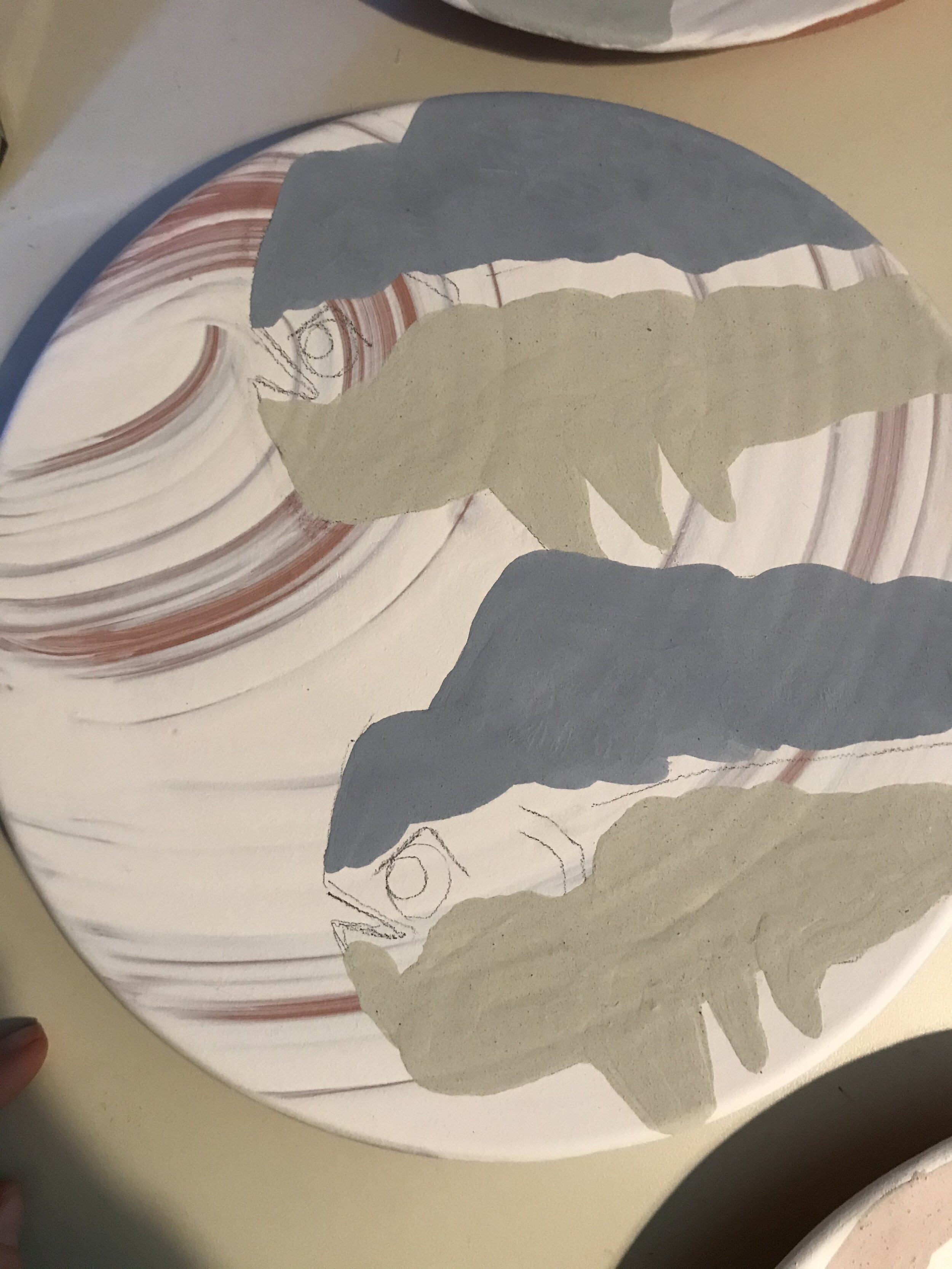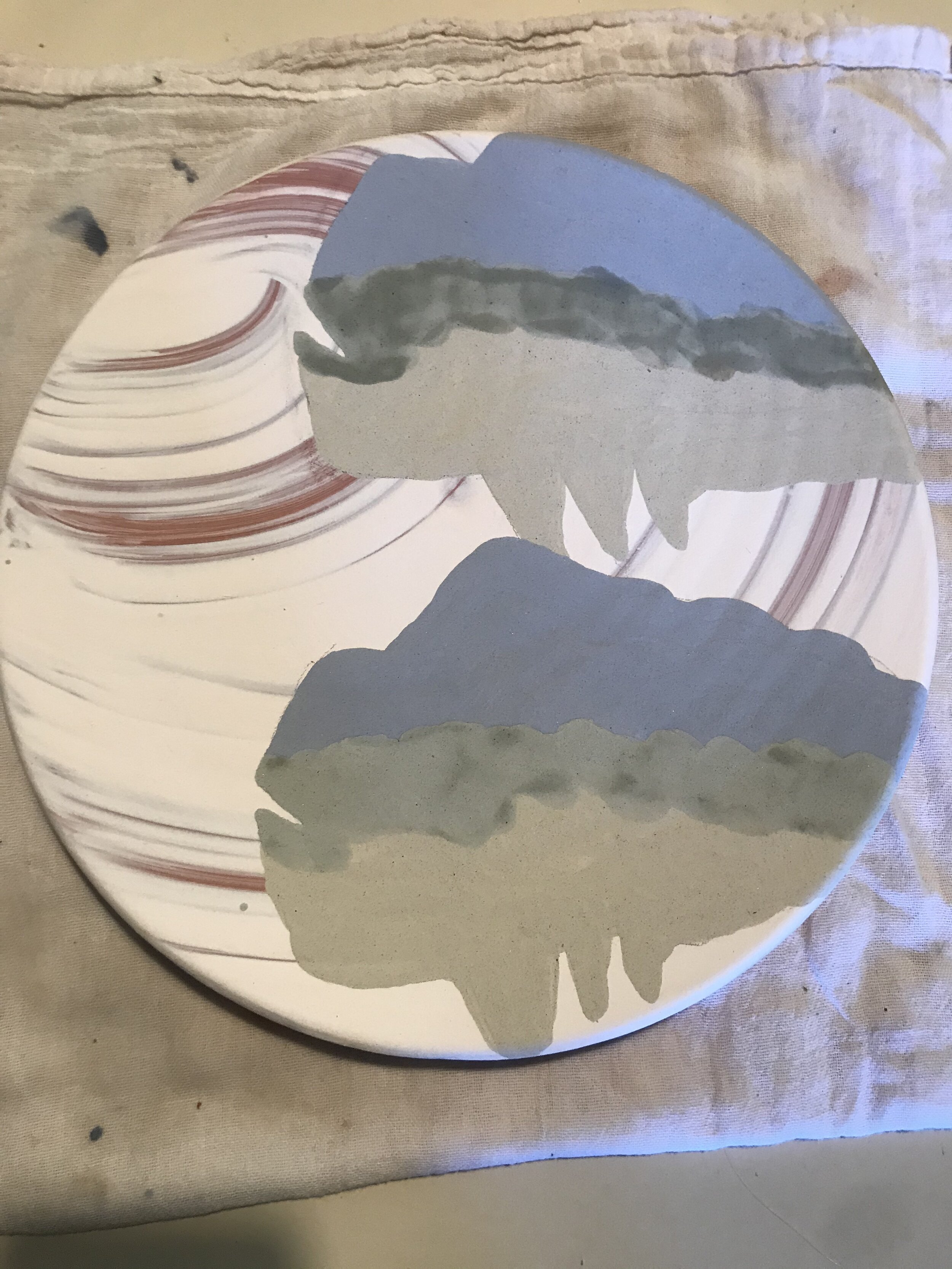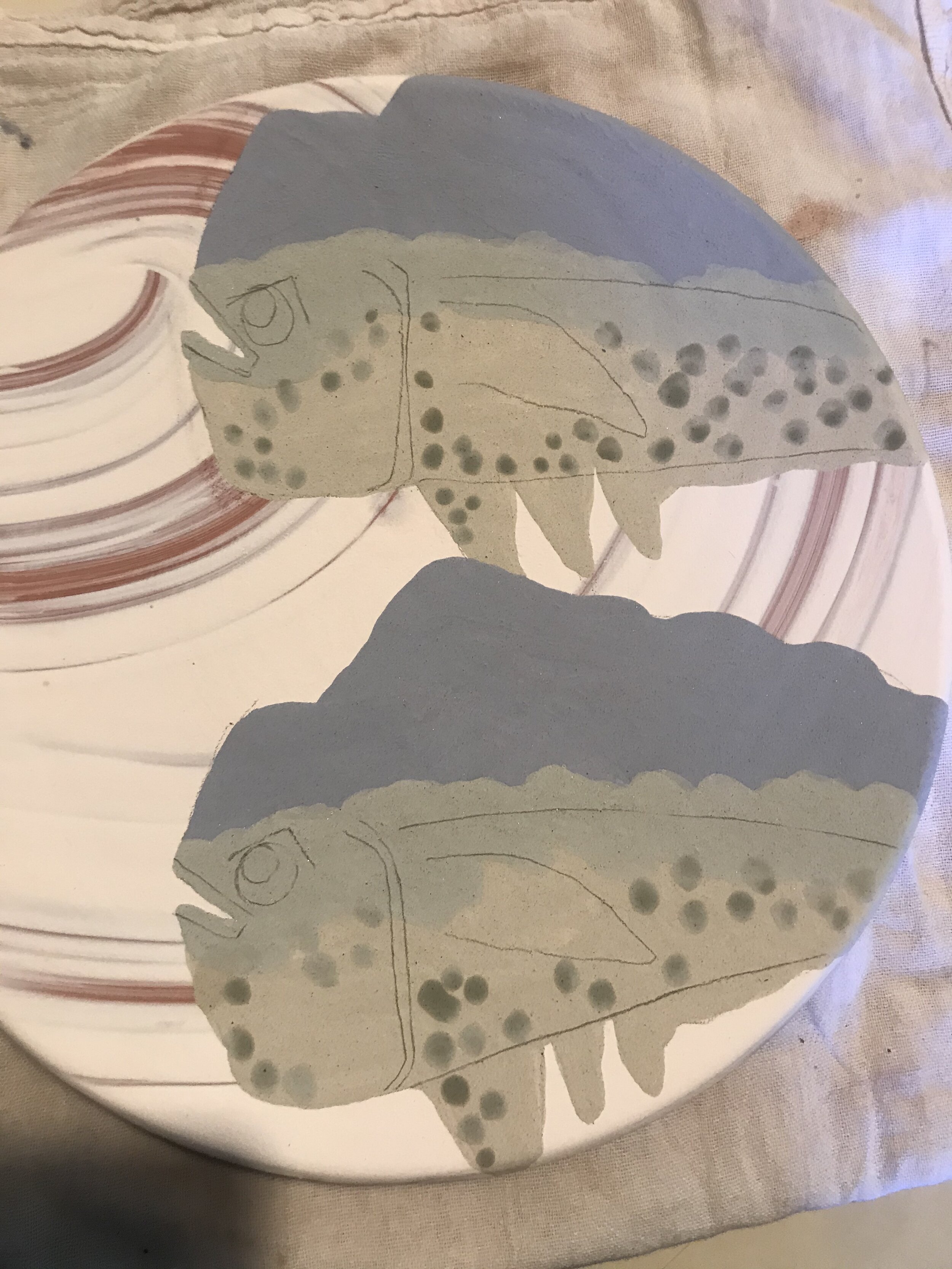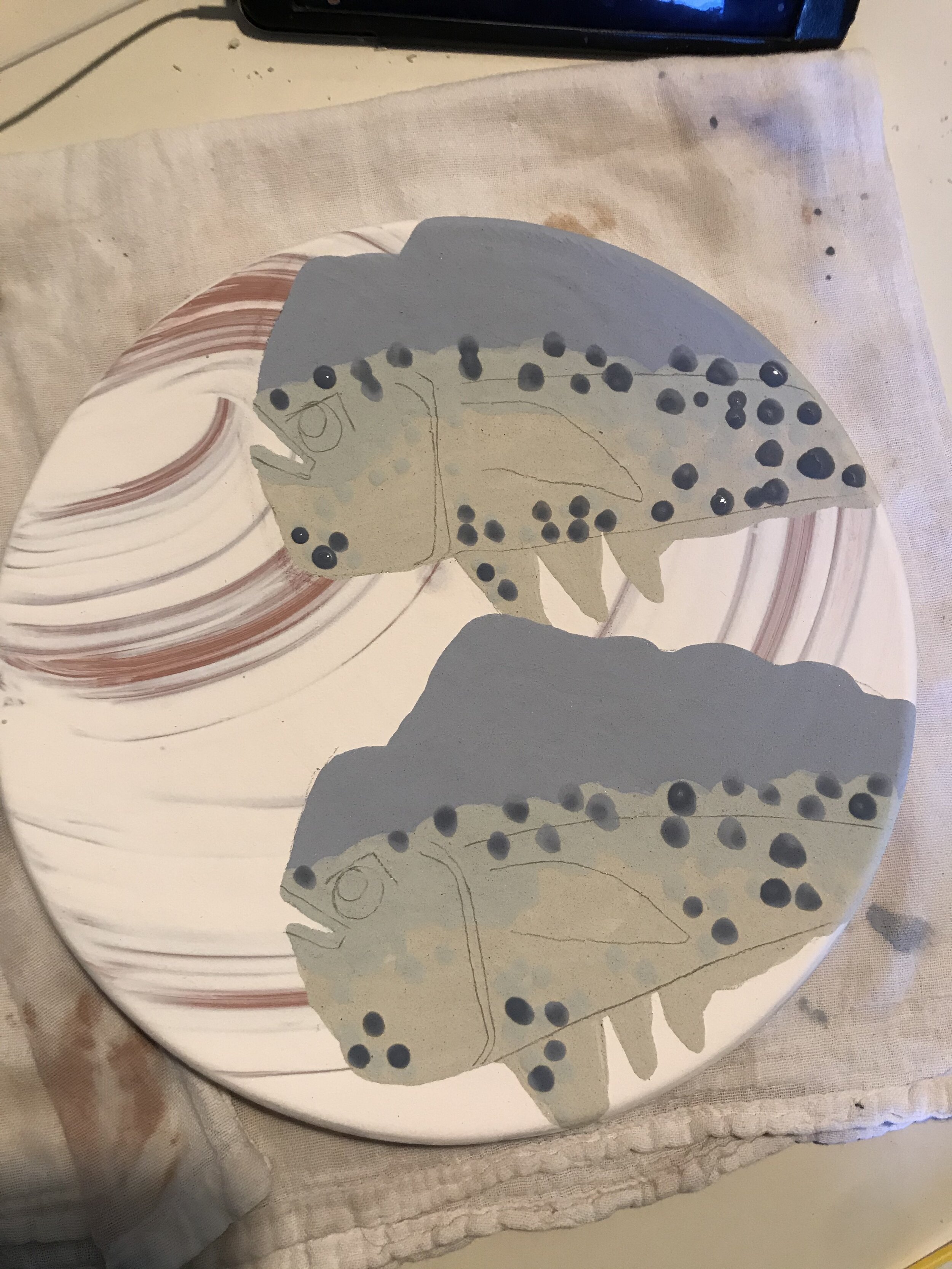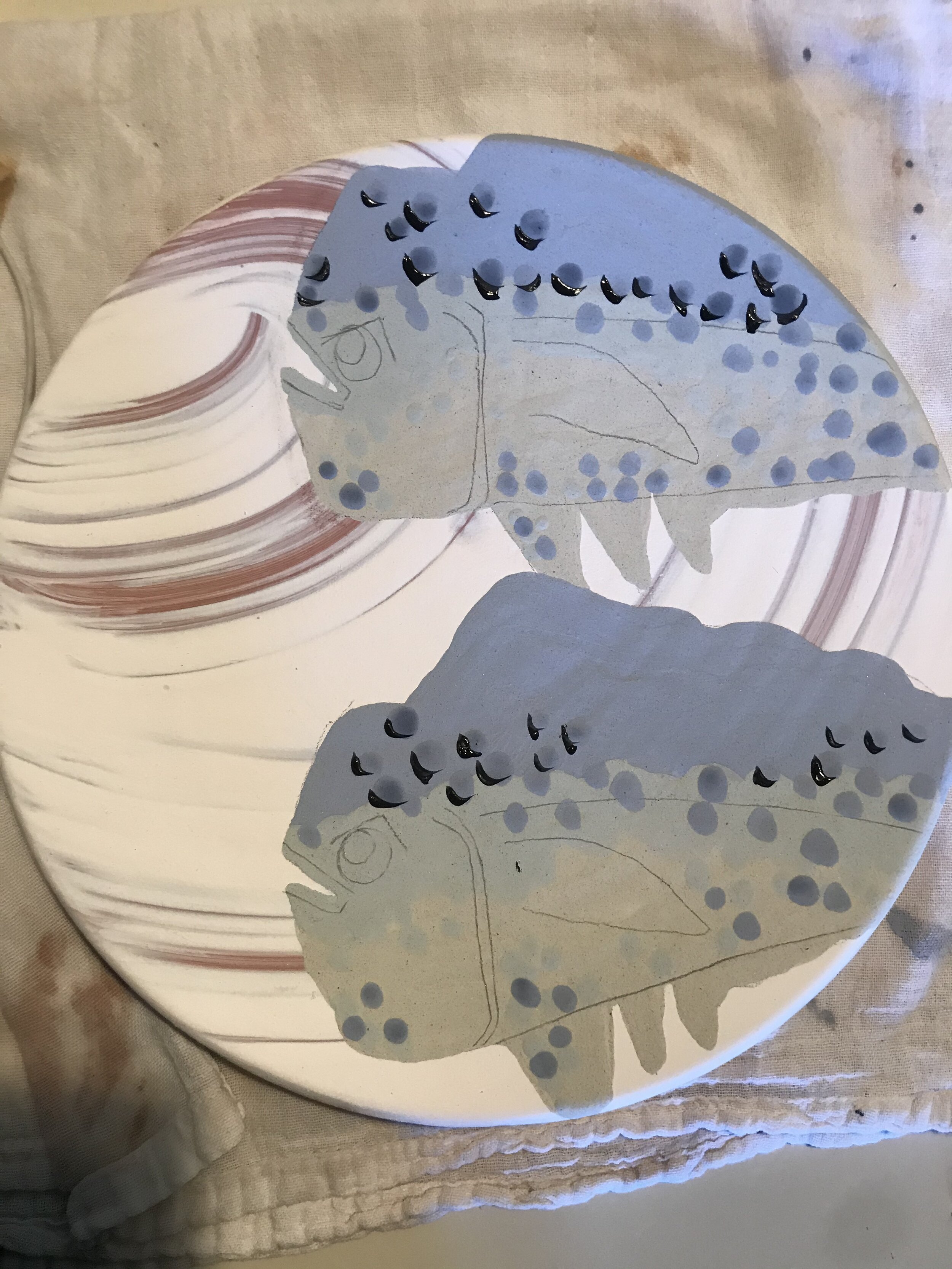Hand Painted
Each piece is glazed using Nuka, traditional Japanese glaze. In Japan, the glaze has the ash from burnt rice hull. Here in Delaware, it has wood ash from friends fireplaces in it. The ash is high in Silica, which is glass. The glaze is waxy, not super shiny and has a fleck. The wood ash give the glaze the fleck. It looks like sand in certain pieces. The dirty wood ash has to be washed and rinsed before going into the glaze. The rinsing removes the lime. It also gets run through mesh screens to catch the debris. This process is a messy time consuming. Once it is made into the glaze, it is stored in a huge plastic trash can. It takes a good three hours to make and is a messy job. Pottery is messy and dirty. After it is made and strained, 6 or 7 jelly jars get filled. The glaze in those jars get stains added to them. This is what the pottery is painted with, the stain colored glaze. painting with glaze is different than painting with paint, you get one shot to get your line right. If you do mess up you can at this point wash the glaze off and start over. This glaze is fussy. It does not like to be thick and drips will not blend in like other glazes with more flux (glass) in them. The waxiness the end product yields is what makes the glaze fussy. Finally, the entire piece gets dipped into the base glaze. There are many other ways someone can paint on pottery. They make underglazes you can paint with or you can paint with liquid clay, but painting with glaze gives a translucency. The translucency lightens up the piece and adds depth to the surface.

